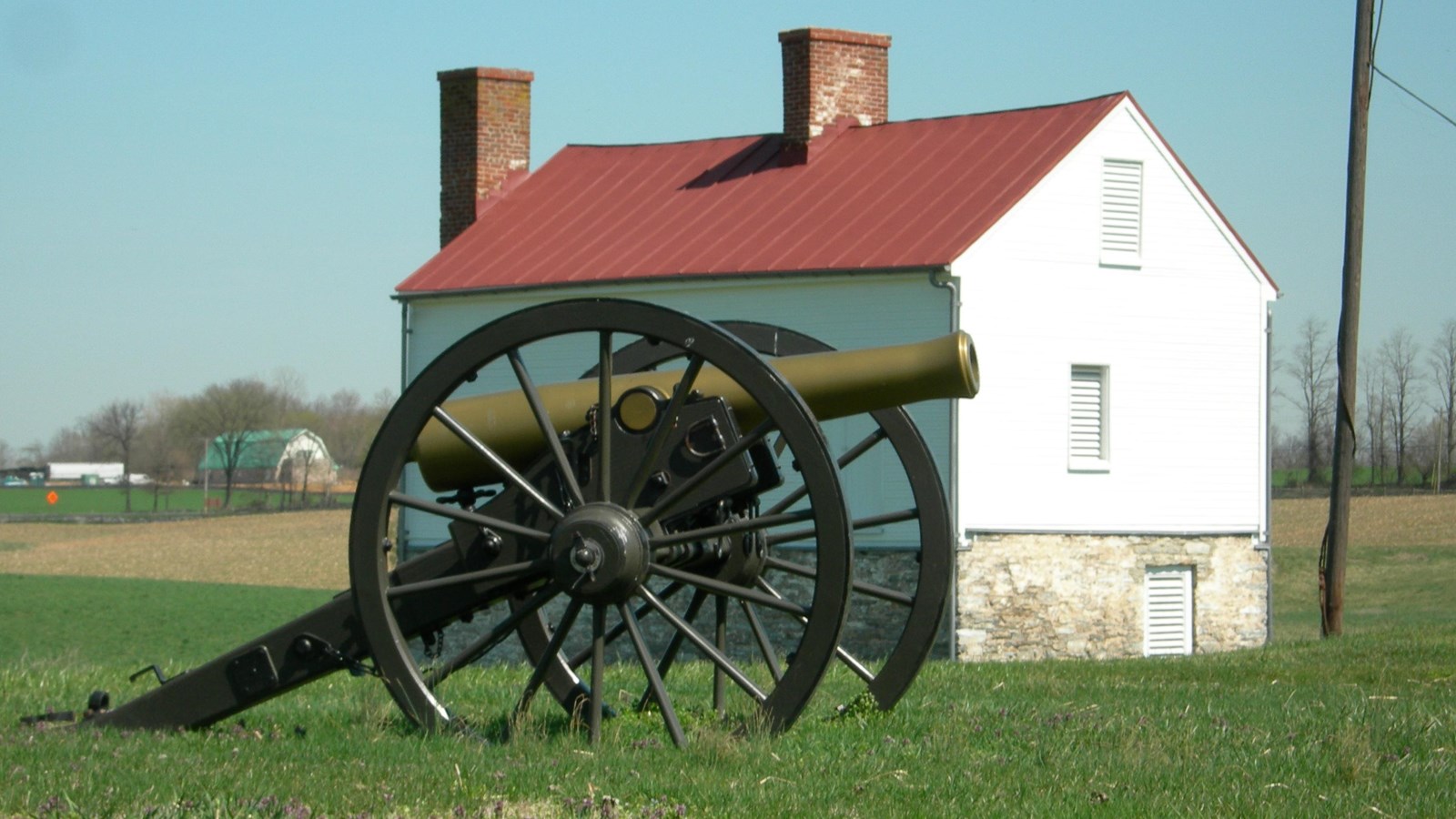Last updated: January 28, 2021
Place
Best Farm Confederate cannon

NPS
Audio Description, Cellular Signal, Historical/Interpretive Information/Exhibits, Parking - Auto, Scenic View/Photo Spot, Trailhead
These replica cannons represent the approximate location of Confederate artillery during the Battle of Monocacy. Around 1 p.m. Massie's Battery relocated to the area between the Best House and the wooden barn (burned during the battle). Carpenter's Battery relocated to west of the stone barn. From these positions the batteries supported McCausland's Cavalry across the river on the Worthington Farm.
Both batteries had begun the battle farther north on the Best Farm. Massie’s Battery’s original position was about a mile to the northwest of the junction or northwest of replica cannon in what is today an office park. Carpenter’s Battery was half a mile north of the junction, near the other replicas.
Around 2 p.m. on the other side of the Georgetown Pike, Kirkpatrick's Battery moved forward to support General Gordon's attack on the Union left. Carpenter's and Massie's batteries remained in place. The Wise Legion, under the command of Captain William M. Lowry moved over from Buckeystown Pike to the west side of the Georgetown Pike near where the New Jersey Monument is today. In these positions the artillery kept the defenders of the bridges under fire and provided enfilading fire on the union troops on the south side of the river. This was particularly effective during General Gordon's assault. These were the final positions of Confederate artillery at the end of the Battle of Monocacy.
Unit Information
Captain John L. Massie commanded the Fluvanna Virginia Artillery during the Battle of Monocacy. This battery had one 3-inch ordnance rifle and three 12-pounder smooth bore Napoleons. Two of the guns were sent to guard Crum’s Ford and did not play an active role in the battle. This battery was formed in October 1862 by combining the 1st and 2nd Fluvanna artillery batteries. It was with Lt. General Jubal Early throughout the Shenandoah Campaign. Captain Massie was mortally wounded a few months later in September 1864 and Captain Charles G. Snead assumed command for the rest of the war. The unit was overrun and captured at the battle of Waynesboro, Virginia on March 2, 1865.
Captain John C. Carpenter commanded Alleghany Rough Artillery. This battery was armed with either; two 3- inch ordnance rifles and two 12-pounder smooth bore Napoleons (armament during Gettysburg battle); or two 10-pound Parrot rifles and one 12-pound Napoleon (armament in December 1864). This battery was originally an infantry company known as the Alleghany Toughs in the Stonewall Brigade. After the Battle of 1st Manassas, its senior officer was Lt. Joseph H. Carpenter whom General Jackson recognized as an artillery student of his at the Virginia Military Institute. On General Jackson's orders the unit was reorganized as artillery. It fought throughout the war until it was overrun with most members and all guns captured on April 1, 1865, at the battle of Five Forks.
Captain William M Lowry commanded a unit of Virginia Light Artillery that is sometimes referred to as Wise’s Legion. This unit was armed with six 12-pound Napoleons. It formed in June 1861 in Monroe county, Virginia. This artillery battery served throughout the war in most of the major engagements. In January 1865, the battery left its artillery pieces in Charlottesville, Virginia, because of a lack of forage for its horses and its members disbursed to winter quarters around Dublin, Virginia. On reassembly in April 1865 they learned of General Lee's surrender and disbanded.
- Duration:
- 3 minutes, 6 seconds
Prior to arriving on the field, Jubal Early was handling the ransom of the city of Frederick. This video discusses the ransom, Early's arrival on the field and the growing battle on the outskirts of the city.
